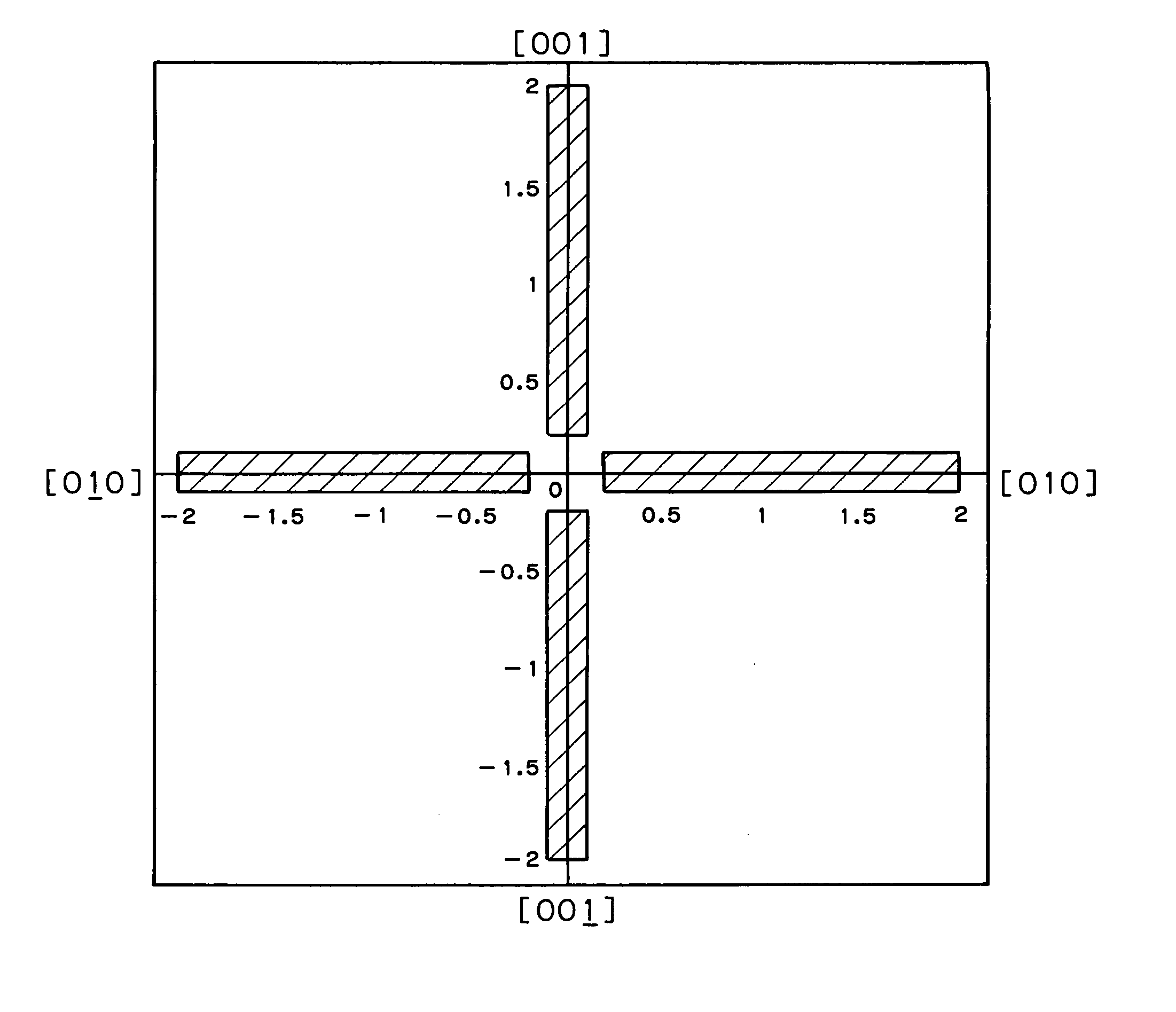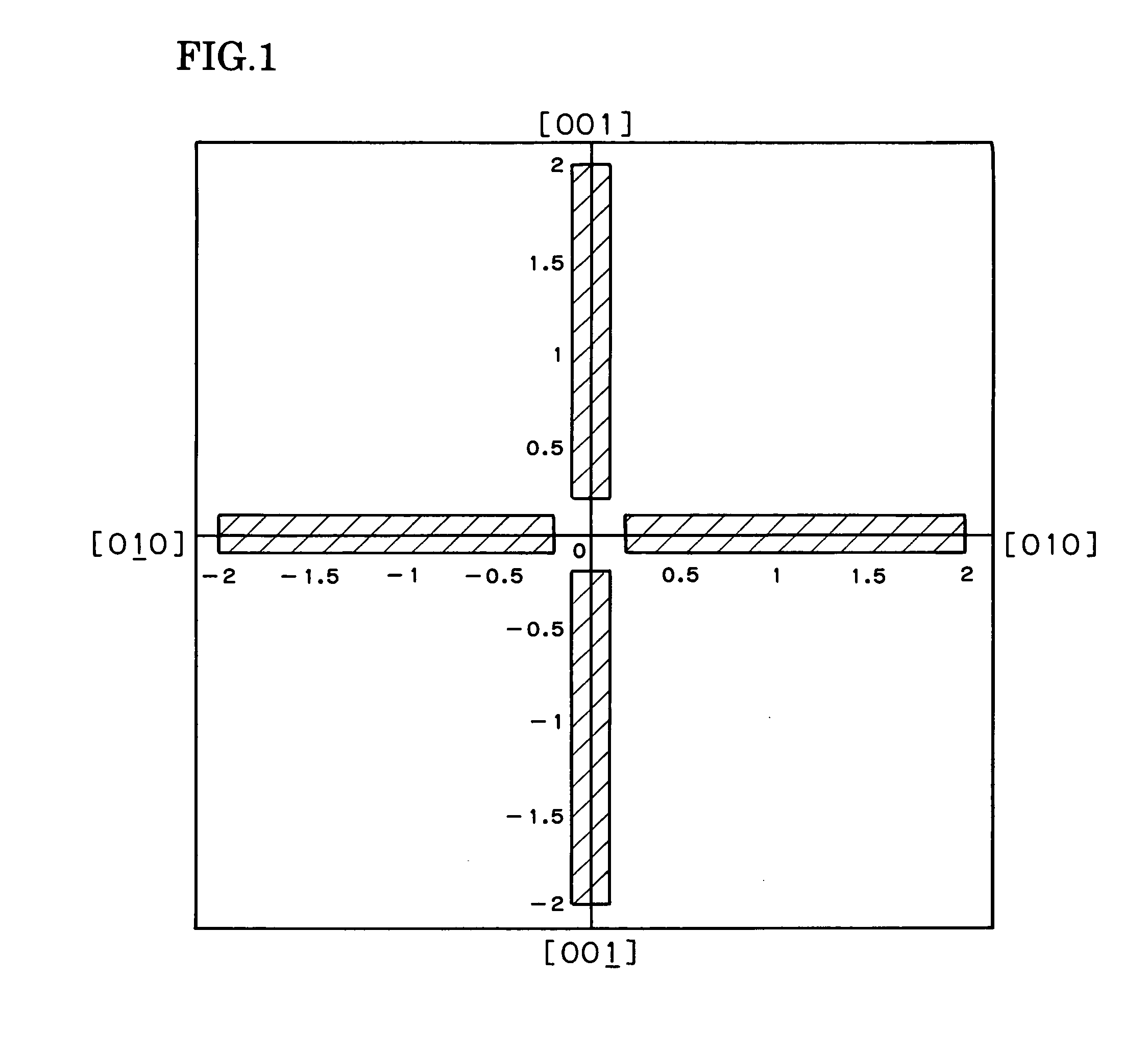Epitaxial wafer and method for manufacturing method
a manufacturing method and technology of epitaxial wafer, applied in the field of epitaxial wafer, can solve the problems of difficult control of epitaxial wafer surface micro-roughness, and achieve the effect of reducing the number of pits
- Summary
- Abstract
- Description
- Claims
- Application Information
AI Technical Summary
Benefits of technology
Problems solved by technology
Method used
Image
Examples
example 1
[0031] Using a wire saw apparatus (made by Nippei Toyama), silicon monocrystalline wafers were produced from a silicon monocrystalline ingot that had been doped with arsenic, had an outside diameter of 6 inches, and had been pulled up by the Czochralski method. The resulting wafers had a resistivity of 4 mΩ·cm, were n-type, and the tilt angles from the (100) plane were θ=0.24° and φ=0.02°.
[0032] These wafers were mirror polished and washed, after which they were subjected to hydrogen baking in which they were held for 1 minute in a 1150° C. hydrogen atmosphere, and then HCl gas was introduced to perform gas etching to a depth of about 0.1 μm. A source gas was then supplied and vapor phase growth was performed while the temperature was held at 1100° C., which formed an epitaxial layer with a thickness of 4 μm.
[0033] In the above steps, the condition of the wafer surface was observed by light scattering method (A) prior to placing the wafer in the vapor phase growth apparatus, (B) a...
example 2
[0036] Using a wire saw apparatus, silicon monocrystalline wafers were produced from a silicon monocrystalline ingot that had been doped with arsenic, had an outside diameter of 6 inches, and had been pulled up by the Czochralski method. The resulting wafers had a resistivity of 4.8 mΩ·cm, were n-type, and the tilt angles from the (100) plane were θ=0.20° and φ=0.10°.
[0037] An epitaxial layer with a thickness of 4 μm was formed under the same conditions as in Example 1, using the wafer obtained above. The product was observed and measured under the same conditions as in Example 1. Specifically, Table 1 shows the defect counts prior to placing the wafer in the vapor phase growth apparatus (A), after gas etching (B), and after epitaxial film formation (C).
[0038] Regarding the defect counts in Table 1, the COP count prior to placing the wafer in the vapor phase growth apparatus (A) was 25, 303, the number of pits after gas etching (B) was 2754, and the number of pits after epitaxial ...
PUM
| Property | Measurement | Unit |
|---|---|---|
| resistivity | aaaaa | aaaaa |
| tilt angle | aaaaa | aaaaa |
| tilt angles | aaaaa | aaaaa |
Abstract
Description
Claims
Application Information
 Login to View More
Login to View More - R&D
- Intellectual Property
- Life Sciences
- Materials
- Tech Scout
- Unparalleled Data Quality
- Higher Quality Content
- 60% Fewer Hallucinations
Browse by: Latest US Patents, China's latest patents, Technical Efficacy Thesaurus, Application Domain, Technology Topic, Popular Technical Reports.
© 2025 PatSnap. All rights reserved.Legal|Privacy policy|Modern Slavery Act Transparency Statement|Sitemap|About US| Contact US: help@patsnap.com


